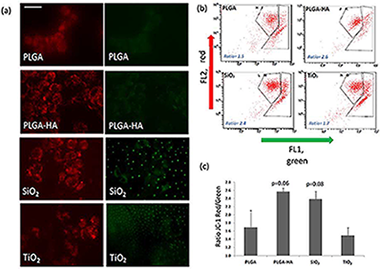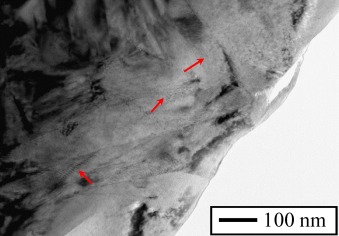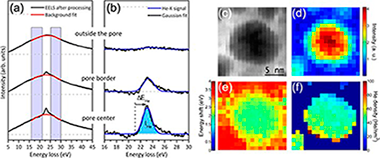Artículos SCI
2018
2018
Nanotecnología en Superficies y Plasma
In Vitro Comparative Study of Oxygen Plasma Treated Poly(Lactic-Co-Glycolic) (PLGA) Membranes and Supported Nanostructured Oxides for Guided Bone Regeneration Processes
Torres-Lagares, D; Castellanos-Cosano, L; Serrera-Figallo, MA; Lopez-Santos, C; Barranco, A; Rodriguez-Gonzalez-Elipe, A; Gutierrez-Perez, JLMaterials, 11 (2018) art. 752
Show abstract ▽

(1) Background: The use of physical barriers to prevent the invasion of gingival and connective tissue cells into bone cavities during the healing process is called guided bone regeneration. The objective of this in-vitro study was to compare the growth of human osteoblasts on Poly(Lactic-co-Glycolic) (PLGA) membranes modified with oxygen plasma and Hydroxyapatite (HA), silicon dioxide (SiO2), and titanium dioxide (TiO2) composite nanoparticles, respectively. (2) Methods: All the membranes received a common treatment with oxygen plasma and were subsequently treated with HA nanostructured coatings (n = 10), SiO2 (n = 10) and TiO2 (n = 10), respectively and a PLGA control membrane (n = 10). The assays were performed using the human osteoblast line MG-63 acquired from the Center for Scientific Instrumentation (CIC) from the University of Granada. The cell adhesion and the viability of the osteoblasts were analyzed by means of light-field microphotographs of each condition with the inverted microscope Axio Observer A1 (Carl Zeiss). For the determination of the mitochondrial energy balance, the MitoProbe (TM) JC-1 Assay Kit was employed. For the determination of cell growth and the morphology of adherent osteoblasts, two techniques were employed: staining with phalloidin-TRITC and staining with DAPI. (3) Results: The modified membranes that show osteoblasts with a morphology more similar to the control osteoblasts follow the order: PLGA/PO2/HA > PLGA/PO2/SiO2 > PLGA/PO2/TiO2 > PLGA (p < 0.05). When analysing the cell viability, a higher percentage of viable cells bound to the membranes was observed as follows: PLGA/PO2/SiO2 > PLGA/PO2/HA > PLGA/PO2/TiO2 > PLGA (p < 0.05), with a better energy balance of the cells adhered to the membranes PLGA/PO2/HA and PLGA/PO2/SiO2. (4) Conclusion: The membrane in which osteoblasts show characteristics more similar to the control osteoblasts is the PLGA/PO2/HA, followed by the PLGA/PO2/SiO2.
Mayo, 2018 | DOI: 10.3390/ma11050752
Materiales Nanoestructurados y Microestructura
Microemulsion Assisted Sol-Gel Method as Approach to Load a Model Anticancer Drug inside Silica Nanoparticles for Controlled Release Applications
Jaramillo, N; Paucar, C; Fernandez, A; Negrete, CG; Garcia, CCollid and Interface Science Communications, 24 (2018) 13-17
Show abstract ▽

Silica nanoparticles are attractive carriers due to their improved safety and effectiveness in drug delivery. Silica nanoparticles were synthesized by using microemulsion assisted sol-gel method, and a model anticancer drug 5-fluorouracil (5-FU) was added to the silica precursor before hydrolysis and condensation reactions start. The obtained materials were characterized by Transmission Electron Microscopy (TEM) and Fourier Transform Infrared Spectroscopy (FTIR). Drug encapsulation within silica nanoparticles causes an increase in particle size. However, particle morphology is not affected. The drug release profile was obtained through high performance liquid chromatography (HPLC). The encapsulation approach showed to be effective for sustaining a continuous and increasing release during testing time (98 h). Further studies were performed to evaluate the cytotoxic effects of silica nanoparticles with loaded 5-FU on Chinese hamster ovary cells (CHO-K1). Materials are non-cytotoxic for all concentration tested (5-200 mu g/mL).
Mayo, 2018 | DOI: 10.1016/j.colcom.2018.03.002
Propiedades mecánicas, modelización y caracterización de cerámicos avanzados
High-temperature compressive creep of novel fine-grained orthorhombic ZrO2 ceramics stabilized with 12 mol% Ta doping
Sponchia, G; Moshtaghioun, BM; Riello, P; Benedetti, A; Gomez-Garcia, D; Dominguez-Rodriguez, A; Ortiz, ALJournal of the European Ceramic Society, 38 (2018) 2445-2448
Show abstract ▽

A novel fine-grained orthorhombic ZrO2 ceramic stabilized with 12 mol% Ta doping was fabricated by spark plasma sintering from home-made powders, and its high-temperature mechanical properties evaluated for the first time by compressive creep tests in both Ar and air. It was found that the high-temperature plasticity of the ceramic deformed in Ar, under which the Ta-doped orthorhombic ZrO2 is a black suboxide with abundant oxygen vacancies in its crystal structure, is controlled by grain boundary sliding (stress exponent similar to 2, and activation energy similar to 780-800 kJ/mol). However, the high-temperature plasticity of the ceramic deformed in air, under which the Ta-doped orthorhombic ZrO2 is a white oxide due to the elimination in situ of oxygen vacancies, is controlled by recovery creep (stress exponent 3, and activation energy similar to 750 kJ/mol). It was also observed that black Ta-doped orthorhombic ZrO2 is more creep resistant than its white counterpart with the same grain size, and that the former deforms as the more conventional Y2O3-stabilized ZrO2 does.
Mayo, 2018 | DOI: 10.1016/j.jeurceramsoc.2017.12.055
Materiales Nanoestructurados y Microestructura
The nanostructure of porous cobalt coatings deposited by magnetron sputtering in helium atmosphere
Lacroix, B; Godinho, V; Fernandez, AMicron, 108 (2018) 49-54
Show abstract ▽

In this work, (scanning) transmission electron microscopy has been used to study the nanostructure of porous cobalt coatings obtained by magnetron sputtering using helium as process gas. This nanostructure consists of closed pores of different nanometric size (about 4-20 nm) that are distributed all over a nanocrystalline Co matrix and filled with the deposition gas. Spatially resolved electron energy-loss spectroscopy analysis was applied to measure and map, with high lateral resolution, the relevant physical properties (density, pressure and He-K edge shift) of helium trapped inside these individual nanopores, in order to provide new insights about the growth mechanism involved in such systems. In particular, a coefficient of proportionality, C = 0.039 eV nm(3), between the blue shift of the He K-edge and the He density has been found. In addition, very high He densities (10-100 at./nm(3)) and pressures in the gigapascal range (0.05-5.0 GPa) have been measured. The linear dependence of these parameters as a function of the inverse radii obeying to the Laplace-Young law for most of the pores suggests that their formation during the coating's growth takes place in regime of elastic deformation of the Co matrix.
Mayo, 2018 | DOI: 10.1016/j.micron.2018.02.004
Química de Superficies y Catálisis
Influence of gold particle size in Au/C catalysts for base-free oxidation of glucose
Megias-Sayago, C; Santos, JL; Ammari, F; Chenouf, M; Ivanova, S; Centeno, MA; Odriozola, JACatalysis Today, 306 (2018) 183-190
Show abstract ▽

A series of gold colloids were prepared and immobilized on commercial activated carbon. The influence of the colloid preparation and stability were studied and related to the gold particle size in the final catalyst. The catalysts show an important activity in the glucose to gluconic acid oxidation reaction, leading to gluconic acid yield close to 90% in base free mild conditions (0.1 MPa O-2 and 40 degrees C). The size-activity correlation and probable mechanism were also discussed. Finally, the viability of the catalyst was tested by recycling it up to four times.
Mayo, 2018 | DOI: 10.1016/j.cattod.2017.01.007
- ‹ anterior
- 167 of 420
- siguiente ›














